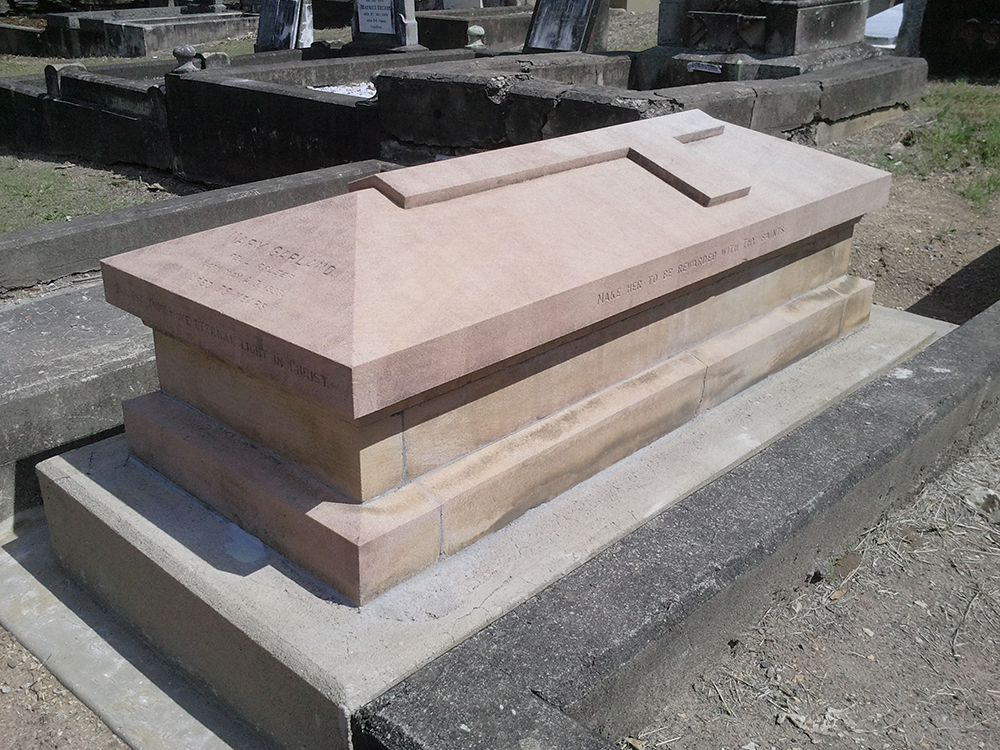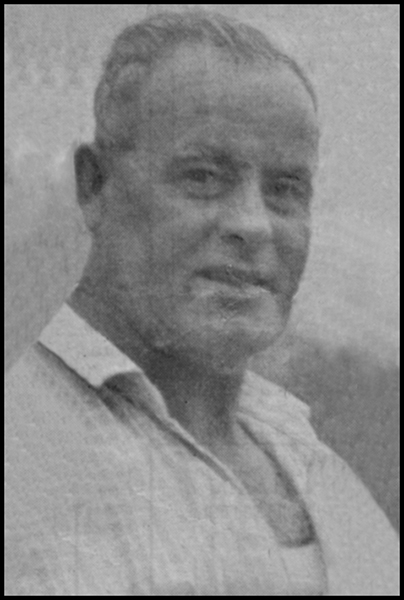WATERHOLE DROWNING : REVEREND JOHN GREGOR (1848)
WATERHOLE DROWNING: REVEREND JOHN GREGOR (1848)
Early newspapers in Brisbane frequently carried reports of tragic deaths by drowning in the surrounding waterholes. Many sank to the depths by accident, unable to swim. Others stumbled in to the water drunk or committed suicide.
A sad story was posted in a local Newspaper in 1848. Reverend John Gregor was found dead in a Nundah waterhole. John Gregor, ordained as a minister of the Church in Scotland made his way out to New South Wales in 1837. Licensed as minister of the district of Moreton Bay, he arrived in Brisbane on 17 January 1843 with Captain John Wickham, the first resident police magistrate. Gregor was responsible for the whole inhabited area around Moreton Bay, a huge area for one man to manage.
He worked out of a crude church attached to a lumber yard. Under constant financial strain, supervising so many people and day schools his work started to wear him down. His first report, ‘Two Journals of Missionary Tours in the Districts of Maneroo and Moreton Bay, New South Wales in 1843’ (S.P.G., The Church in Australia, London, 1846), was enthusiastic, but the next indicated his growing discontentment. From 1845 he lived at the German station at Nundah, and this further distanced him from the flock.
Theodore Franz, a witness said that Reverend Gregor had been complaining of a headache and the heat, watching him walk down to the waterhole he assumed it was just to bathe and cool off.
“About ten minutes afterwards, I heard Nicquet calling to me and asking if Mr. Gregor could swim. I answered “No” and hurried to the place where he was. I did not see Mr. Gregor there. I undressed myself and sprang into the water and swam to the place where I thought Mr. Gregor might have sank— Mr. Nicquet also came into the water. He felt the body of Mr. Gregor with his feet, but could not succeed in raising him; but after another attempt he did succeed. I assisted to draw the body to the land—there was no appearance of life, although the body was warm. We did all we could to restore life, but without success.”
Do you think it was just an accident? Find out on Australia’s longest running true crime show “True Crimes” – presented by Jack Sim on 4BC Nights with Walter Williams. Thursday evenings 9.35pm on Radio 4BC.
ON THE RUN IN JAIL : WILLIAM STOKES (1974)
This week the people of Queensland have been amazed with the arrest of two men in relation to the disappearance of Barbara McCulkin and her two daughters in 1974. This 40 year old cold case suddenly appears close to having a solution. One line of inquiry pursued by Police to explain why Mrs McCulkin and her children were murdered, was that she had valuable knowledge relating to the Whiskey Au Go Go night club bombing. Another person who claimed to have inside knowledge was Billy Stokes.
37 years ago the Sunday Sun Newspaper published a story titled “ON THE RUN IN JAIL”. Prison officials were forced to transfer an inmate from Boggo Road to Wacol Prison following a confrontation with the Whiskey Au Go Go killer John Andrew Stuart.
In an incredible twist William Stokes, a staunch supporter of Stuart’s innocence turned on Stuart and labelled him as a killer. In February 1975 Billy Stokes published an account of the firebombing of the Whiskey Au Go Go Nightclub in Port News – which he claimed the crime was carried out by a group of criminals known as the “Clock Work Orange Gang”. As editor of this Brisbane publication Stokes used the magazine to publish strongly worded articles supporting the innocence of John Andrew Stuart and James Finch – the two men convicted of the firebombing in which 15 people died.
Hear what Stokes had to say on Australia’s longest running true crime show “True Crimes” – presented by Jack Sim on 4BC Nights with Walter Williams. Thursday evenings 9.35pm on Radio 4BC.
The First Anzac Day: Canon David John Garland
Whether getting up at the crack of dawn for the service, or remembering in silence those who fought and lost their lives in war – Anzac Day has become a huge part of our lives. But not many people think about how ANZAC Day came about or that the originator and architect of Anzac Day ceremonies and rituals – Canon David John Garland is buried in Toowong Cemetery.
Chaplain Lieutenant-Colonel David John Garland campaigned in Queensland for legislation so Anzac Day could be a public holiday for solemn commemoration which was achieved in 1921. Garland was also chaplain for soldiers assembled in Brisbane prior to embarkation from 1915 till late 1917. He then served as Chaplain in Middle East until 1919.
He developed special burial services for those laid to rest at cemeteries and raised funds for memorials to honour those who served, including management of the soldiers’ graves at Toowong Cemetery. He initiated the Anzac Day march, the returned soldiers’ luncheon, the two minutes silence, the wreath-laying ceremonies at memorials and the special church services. He also began a trust to use funds raised from selling Anzac Day badges and ribbons for the care of soldiers’ graves at home and overseas. The ceremonies ad badge were taken up in other States in Australia, in New Zealand and Great Britain. Garland inaugurated an ANZAC Day service at the cemetery in 1920.
To commemorate the 75th anniversary of Garland’s death, the Friends of Toowong Cemetery has facilitated the restoration of his grave as it will be the focus of visitation over the next four years during the commemoration of the centenary of World War One. Canon Garland’s grave was restored by Queensland Heritage Masonry funded by the Toowong Cemetery Heritage Fund established by Jack Sim.
On behalf of the Friends of Toowong Cemetery, we would like to invite you to observe the rededication of Canon Garland’s grave on Saturday 18 October 2014 at 2pm. The service, led by the Reverend Dr John Moses, will be followed by afternoon tea. Please enter Toowong Cemetery by the main gate and follow the directional signage to the grave site located in Portion One. RSVP not required.
Available for purchase on the day will be Anzac Day Origins: Canon DJ Garland and Trans-Tasman Commemoration by Rev. Dr J Moses and Dr George Davis.
[soundcloud url=”https://api.soundcloud.com/tracks/174008097″ params=”auto_play=false&hide_related=false&show_comments=true&show_user=true&show_reposts=false&visual=true” width=”100%” height=”250″ iframe=”true” /]
Find out more on Australia’s longest running true crime show “True Crimes” – presented by Jack Sim on 4BC Nights with Walter Williams. Thursday evenings 9.35pm on Radio 4BC.
LOWOOD HORROR: BOOTS HOBSON (1961)
West of Brisbane sits the tiny suburb of Tarampa near Lowood. This quiet rural setting was turned into a 5 mile long crime scene on Boxing Day, December 1961. The afternoon of celebration and time with family was cut short when the killer went on a rifle rampage through neighboring farms and streets killing a couple and severely injuring two others. When interviewed by Police he seemed to have no clear motive – and claimed “I had nothing against the people”.
The killer was a youth of 17, living with his family on a small farm at Tarampa in the Lockyer Valley. John “Boots” Hobson was the eldest of 5 children, he was deeply tanned and well built from working on the family farm throughout the day. After a row with his father over feeding the fowls, Hobson took grabbed his 22. rifle and stormed out. Making his was through four neighboring farms he shot anything that moved, shooting birds, animals and people. When police converged on the area they followed the trail of dead birds and animals to Hobson.
John Hobson had willfully murdered Anna Freese 58, and her husband Albert Freese also 58. He attempted to kill Mary Jendra, 32 and Andrew Jendrachowski 44. The surviving pair were hospitalised and kept under close observation. Mary, who had been shot in the left side of the groin was in a satisfactory condition. Her brother-in-law Francis Jendrachowski who was shot in the side of abdomen was in a critical conditional and later passed away.
Hobson was charged before Mr.V.L Wilson. He was handcuffed during the court proceedings and only six members of the public were in court. Hobson was taken to the remand section of Boggo Road Gaol where he would serve out his life sentence.
On Monday, 7 March 1966, at 2.10pm, Bernard “Bernie” Ralph, aged fifty, devoted husband and father of three, was brutally attacked in the prison workshops by John Hobson. Hobson had clashed with warder Ralph earlier that day. Working in the boot shop Hobson struck the unsuspecting officer twice on the head with an iron bar severely fracturing his skull
Hobson’s motives for killing Ralph remain unclear, a psychiatrist testified that if Ralph had said “please” to Hobson he would have not been attacked. Already serving life, Hobson had nothing to lose. Ralph died in hospital from his extreme injuries.
[soundcloud url=”https://api.soundcloud.com/tracks/174009560″ params=”auto_play=false&hide_related=false&show_comments=true&show_user=true&show_reposts=false&visual=true” width=”100%” height=”150″ iframe=”true” /]
Find out what happened to John “Boots” Hobson on Australia’s longest running true crime show “True Crimes” – presented by Jack Sim on 4BC Nights with Walter Williams. Thursday evenings 9.35pm on Radio 4BC.






